On Saturday 10 and Sunday 11 April 2021 we met Den Barber from Yarrabin Cultural Connections and a team of cultural burning practitioners at Birkenburn Farm near Bungendore to learn about Aboriginal cultural burning.
The workshop began with an Acknowledgement of Country and Smoking Ceremony. The smoking ceremony involves smouldering gum leaves to produce smoke, which provides a spiritual cleansing and protection for all workshop participants.

For Aboriginal people, cultural burning is an ancient traditional practice used for thousands of years throughout the many different Cultural Lands of Australia. The process is complex with many interconnected objectives including protecting cultural assets by maintaining the health of surrounding country, protecting ceremonial sites, habitat enhancement and fuel reduction. Fuel reduction is often not the primary objective. Cultural burning uses frequent, low intensity fires that do not adversely impact parent trees or the forest canopy. Parent trees are considered sacred by Aboriginal people.
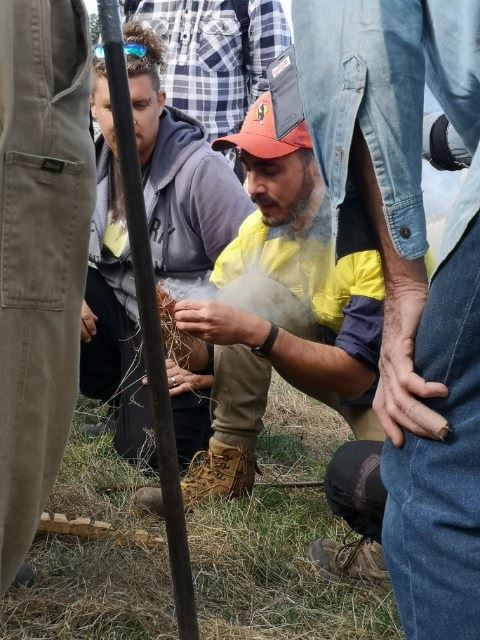
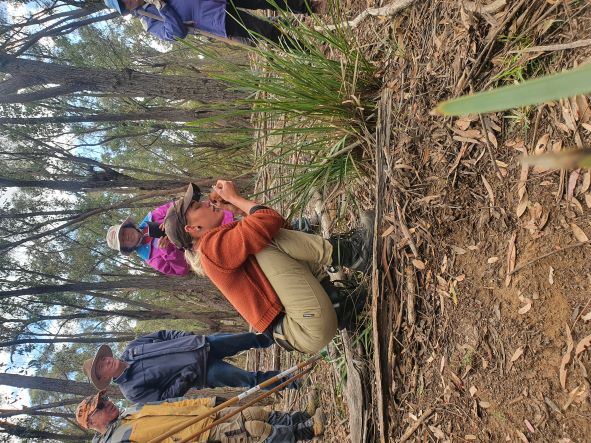
You don’t manage your mother you look after her
Den Barber told us about the Aboriginal belief of caring for Mother Earth. Before starting the fire, we prepared the burn site (under the direction of our guides) by raking back excessive bushfire fuel loads of bark, leaves and sticks from the base of the trees. It was necessary to create containment lines in this ‘Country’ that has not seen any fire for more than 50 years by raking debris to create bare tracks. Den showed us a ‘parent tree’ which had a hollow in it, we could see signs that the hollow was in use because there were scratch marks and frass at the base of the tree.
Cultural burns help protect native animal habitat by reducing fuel loads and the intensity of fires. The low intensity of a cultural burn allows animals, insects and reptiles to move away from the fire. By protecting the forest canopy the ecosystem is preserved, unlike bushfires where whole ecosystems can be lost in one fire event.
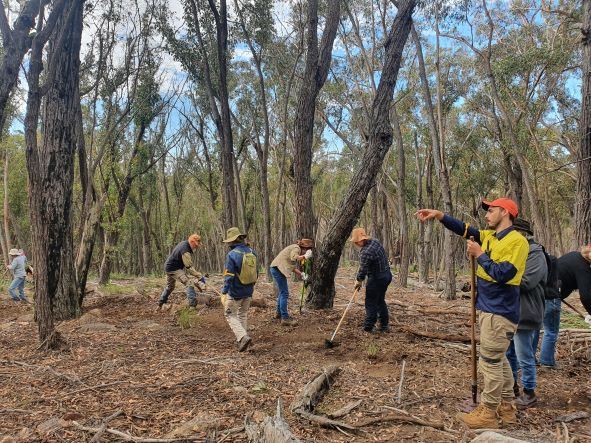
The right fire at the right time
Cultural burning is not about saving money or meeting hazard reduction burn targets. It is about putting the right type of fire, at the right time into the right landscape. This takes time, patience and guidance from an Aboriginal practitioner. Aboriginal people have a relationship with fire and the Mother Earth, they are the traditional custodians of fire in the Australian Landscape.
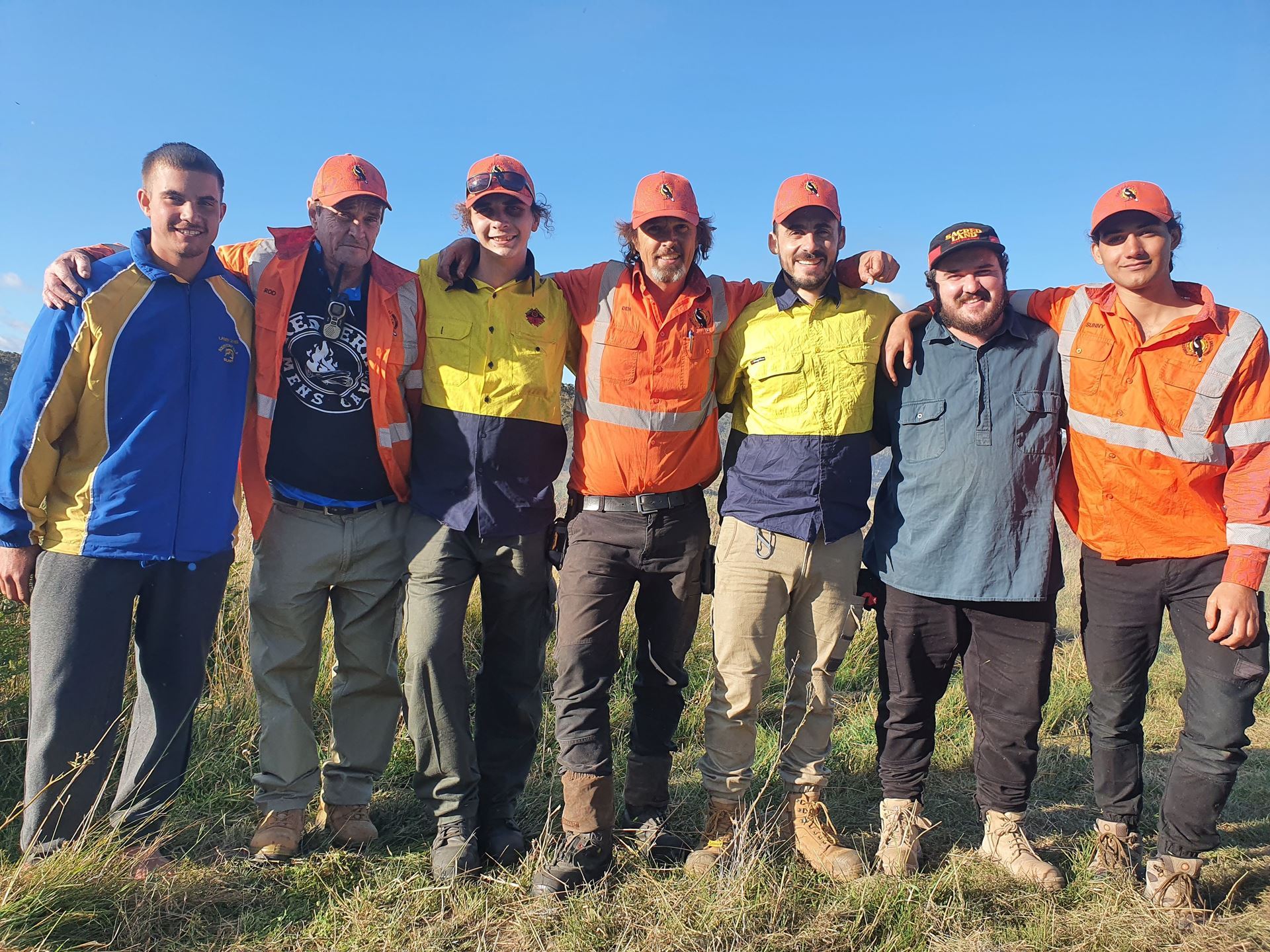
Let go of time… and be patient
Den taught us the right way to start a fire by establishing a single ignition point in the middle of the burn site, so that the fire will move out in a circular fashion from that point. Using a series of fires like this produces a mosaic burn effect in the landscape. The fire is low and slow and aims to predominantly leave only a black ash layer behind. Some patches and even individual plants will not be burnt.
A cultural burn will only be conducted during suitable weather conditions including the right amount of wind, temperature, humidity as well as the appropriate season.
Look for signs that a burn is needed, this could involve asking yourself questions. What are the fuel loads like in the forest? Are the trees or shrubs fruiting? How much dead grass is in the tussocks? Is one plant type dominating?
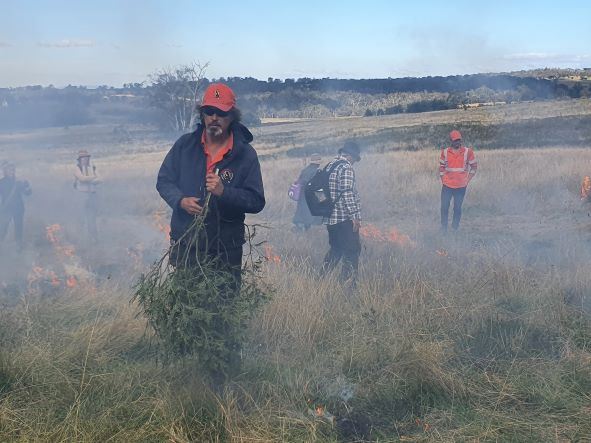
Burning in grassland is like mowing the lawn
Slow cool burning protects the roots of the grasses and shrubs so they can regenerate when it rains. Den suggests that grassland is ready to burn when 50% of the tussock is dead grass.
One of our guides shared his experience of using cultural burning to manage Serrated Tussock. Burning tussock at the right time of the year can reduce seed heads and create space for other plants to establish. Burning over several years is required and can be used as part of an integrated weed management plan.

Knowledge is only powerful when shared
Towards the end of the workshop, we asked how non-Aboriginal people could apply the knowledge learnt at the workshop? What should we call a burn if we want to conduct one? Den’s answer ‘if you have received Cultural Knowledge, you should acknowledge that it is a Traditional Aboriginal Cultural Practice. It is good to share and practice cultural burning regardless of your heritage.’
The generous way in which Den and the Yarrabin Fire Crew shared their traditional knowledge was appreciated by everyone attending the workshop.
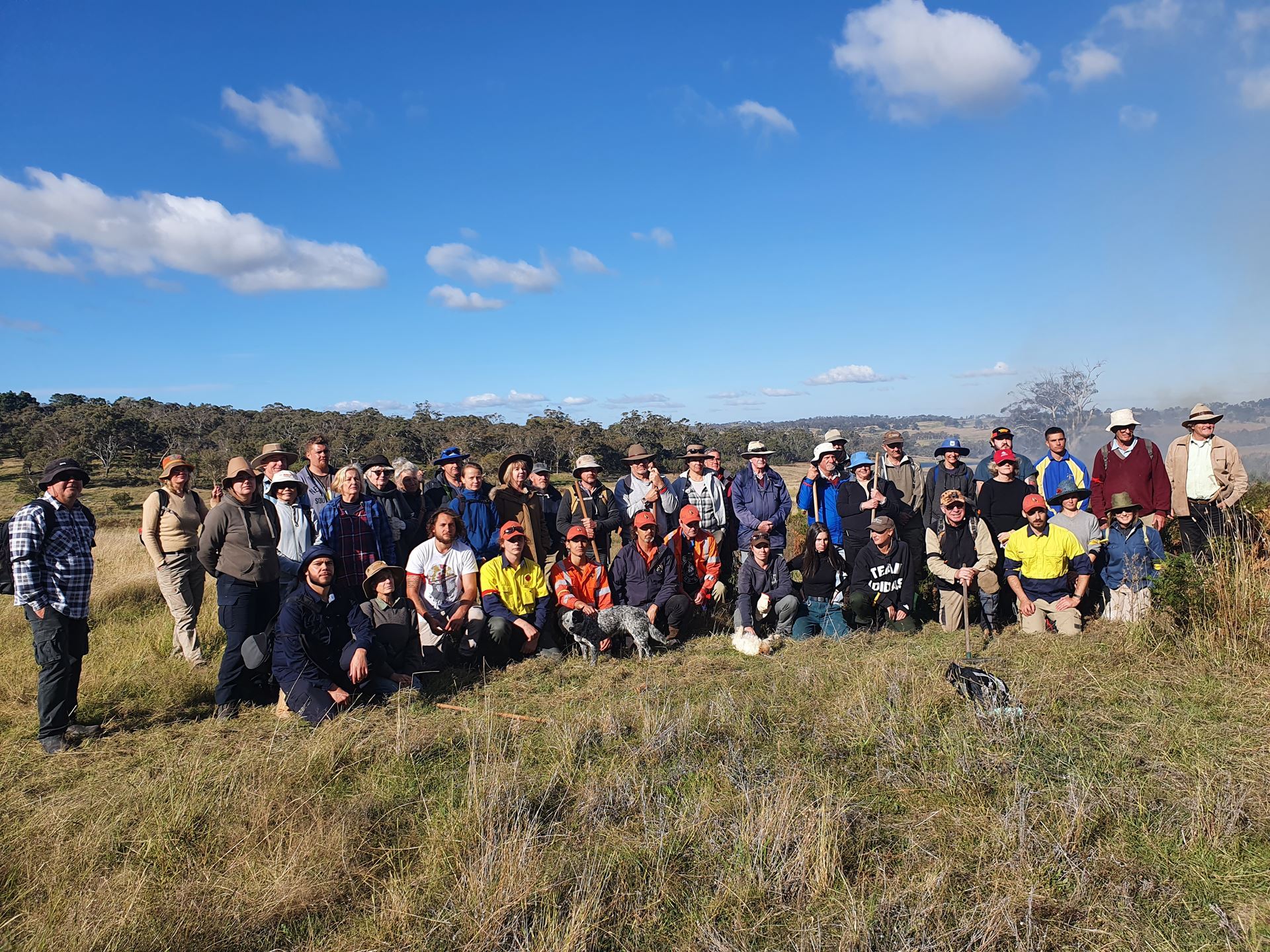
Rural Fire Service perspective
A Bush Fire Hazard Reduction Certificate may be required to perform any type of burning on privately owned land and a Fire Permit from the Rural Fire Service (RFS) is required during the bushfire period. You need to comply with the conditions of the certificate or permit including safety requirements and notifying your neighbours. Notification of intention to burn is a relatively simple process that can be done online. Please contact the RFS for more information.
Resources
Firesticks Alliance
Yarrabin Cultural Connections Pty Ltd
Steffensen, V (2020). Fire Country: How Indigenous Fire Management Could Help Save Australia. Richmond, Hardie Grant Explore, Australia.
Australian Story documentary featuring Victor Steffensen
CSIRO publishing ‘How Indigenous Fire Management Could Help Save Australia’
NSW Rural Fire Service
Fire permits
Notification of intention to burn
Savanna burning
Nature Conservancy Research into the effects on cultural burning on climate change
Serrated Tussock
Burning as a control method for Serrated Tussock
.jpg)
This event was funded by the NSW Government through an Increasing Resilience to Climate Change (IRCC) Community Grant.